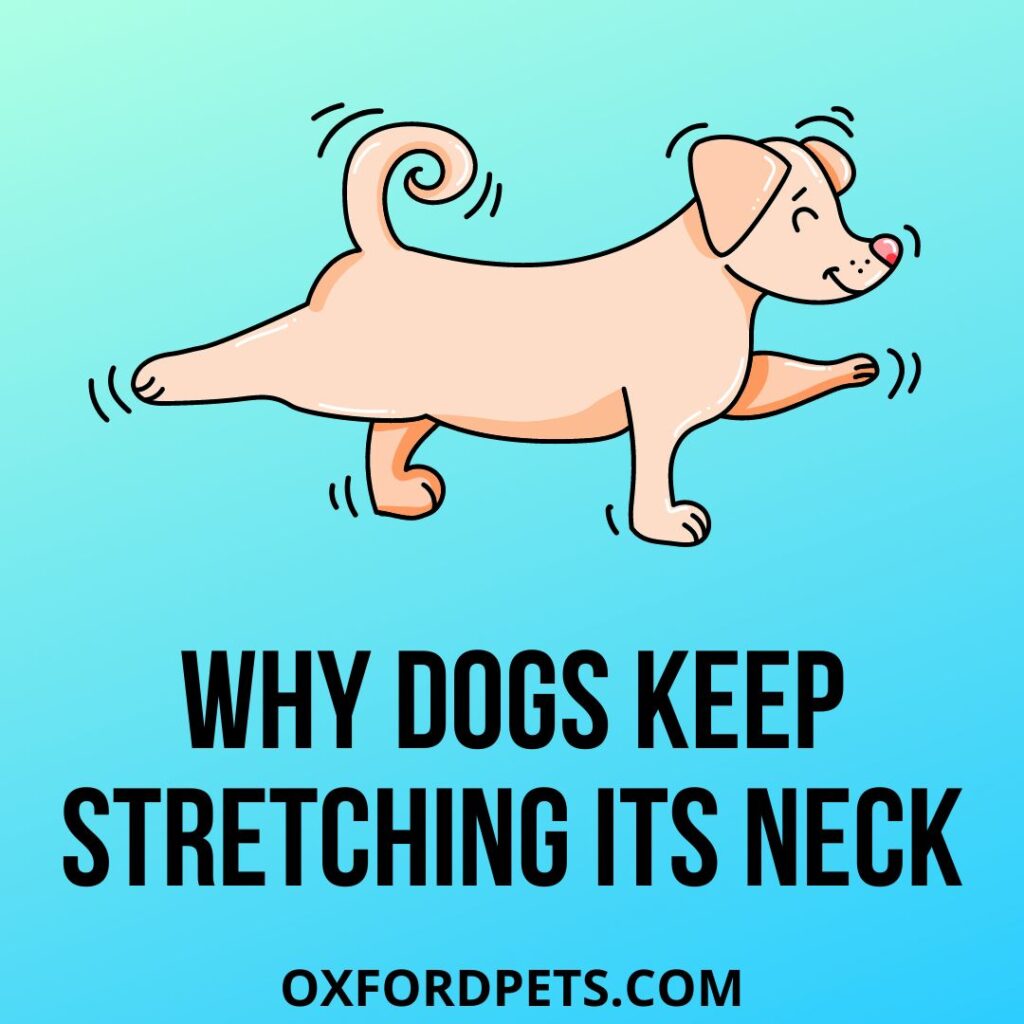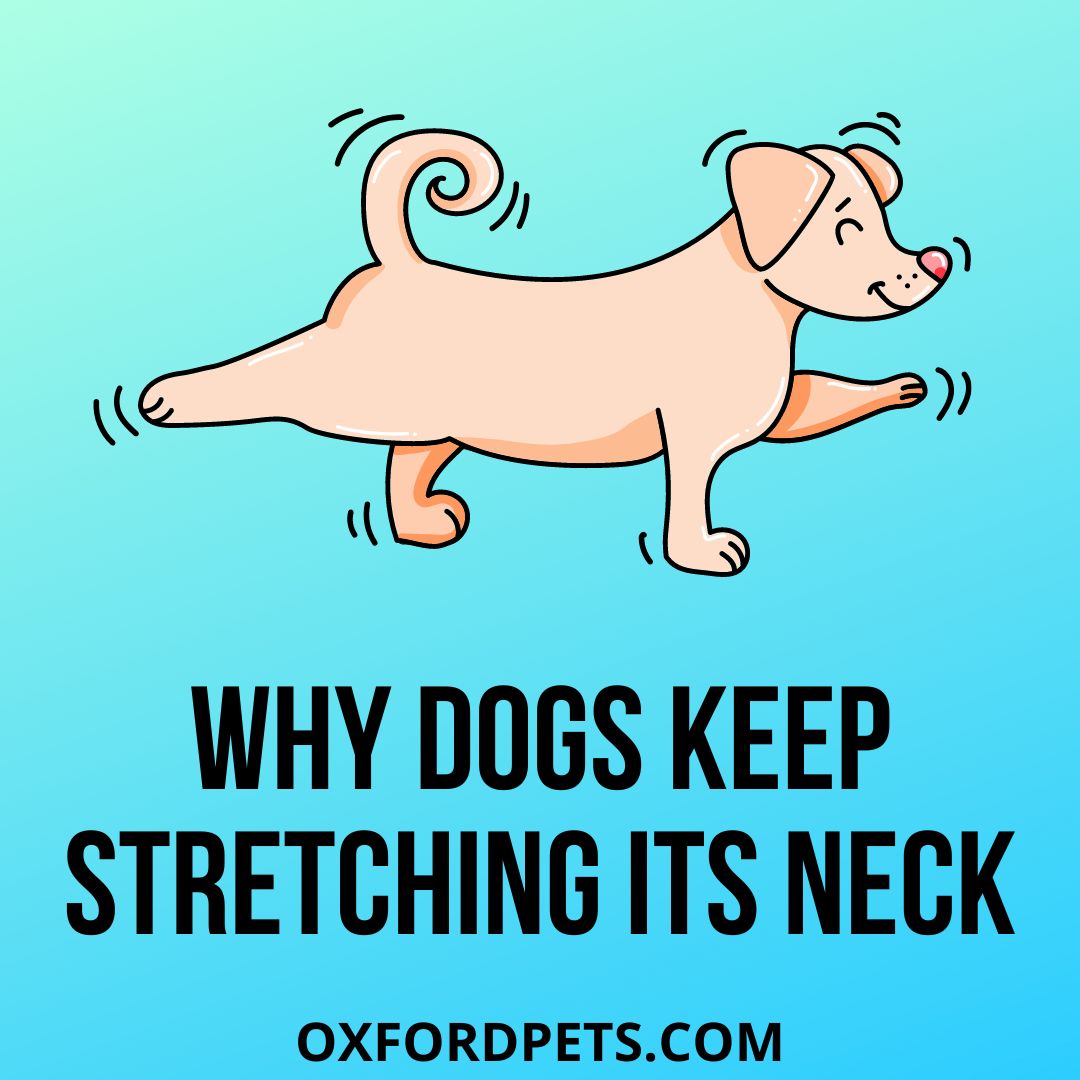Ever wonder why your dog always seems to be stretching its neck? As it turns out, there are a few reasons for this behaviour.
Reasons Why Dogs Keep Stretching Their Necks Includes It’s just part of a dog’s natural stretching routine, a sign of excitement or happiness, It feels good and finally It could be an indication of pain, discomfort, chest Injury or Compulsive Dog Behaviour.
In this article, we’ll explore some of the most likely explanations for why your dog might be constantly stretching its neck.
Contents
- Logical Reasons For Neck Stretching In Dogs
- People also ask…
- Why Does My Dog Keep Lifting His Head Up?
- Why Does My Dog Keep Throwing Her Head Back?
- Dog Looking Up At Ceiling
- My Dog Can’t Get Comfortable And Keeps Stretching
- My Dog Keeps Looking Up At The Ceiling And Sniffing
- Dog Stretching Neck After Eating
- How can you tell if a dog has a stomach ache?
- How does a dog act with an upset stomach?
- How to Help Your Dog If It Keeps Stretching Its Neck
- Conclusion
Logical Reasons For Neck Stretching In Dogs

1) Basic Morning Stretch
If your canine has simply woken up, they will be stretching to loosen up.
You may experience a great stretch while you rise up in the morning. It allows your body to move by loosening muscle mass and blood flow.
Your canine’s body functions the same. A morning stretch feels precise to them.
2) Stretching Relieves Bloating
Some canines stretch out their necks because they suffer from belly and digestion problems.
Many canines suffer from dog bloat caused by immoderate drinking, age, overeating, and genetics. Bloat makes your canine’s belly appear spherical, and uncomfortable gases build up in their system.
Canines ease bloat strain by lengthening their necks and stretching the belly muscles away from the inner organs.
A bloated belly may emit gurgling noises, appear visibly swollen, and feel warm while you place your hand on it.
3) Swallowing Difficulty
If the canine suffers oesophagal pain, they try to ease it by stretching their neck. Dysphagia, or trouble swallowing, is a common cause of oesophagal pain. This occurs if something gets caught in the oesophagus, which includes objects, fluids, or food. Tumours or lesions also can cause swallowing issues.
Dogs with difficulty swallowing can also refuse to devour or lose their appetite. Also, they may vomit the food. Acid reflux, regularly known as GERD, causes problems in swallowing.
If the canine has dysphagia, it must be taken to a vet. Dogs would possibly require emergency clinical attention in case of choking.
4) Pancreatitis In Canines
Neck stretching is a sign that your canine has pancreatitis.
This situation occurs when the infected pancreas begins to digest itself. It causes sharp aches and soreness that your canine is trying to alleviate by stretching her neck and stomach muscles away from the pancreas.
It can be easy to confuse pancreatitis, an extreme clinical situation, with dog bloat or benign belly troubles.
One way to affirm this situation is to notice if your canine appears feverish or weak. If your canine is hunched over whilst standing up, and his stomach appears swollen, as it does with bloat, he might be coping with pancreatitis.
5) Chest injury
If your canine has suffered recent harm to the chest, this could additionally cause them to stretch their neck. Chest accidents frequently cause aches or problems breathing. Your canine will stretch its neck to try and relieve the ache or get extra oxygen.
Signs of chest injury consist of shallow or laboured breathing. You can also additionally notice your canine’s chest appears sunken in. However, chest accidents can be internal, so you might not see any outward signs.
Running into an item like a table, a vehicle accident, a fall, and combat with some other canine can all result in chest harm.
6) Stress Or Anxiety
Canines, like people, have a mess of troubles because of stress. Because stretching is a way for a canine to unwind, if you see a surprising boom in stretching activity, consider any environmental adjustments or reasons that might contribute to the stress.
New individuals in the home, including new pets or the arrival of a new baby, are a number of the most accepted triggers in this case. Giving your canine a quiet area to rest wherein they won’t be disturbed is the reliever.
7) canine Plays a play bow
Few things are cuter than receiving a play bow from your canine. They will stretch out their front paws, decreasing their head and stretching their neck.
This is commonly an invitation to play. If your canine plays a play bow and then looks at you expectantly, he says, “Hey, let’s play”.
It can also be a way of displaying submission. The neck is one of the most susceptible areas of your canine’s body. Lowering the top exposes the neck. This indicates submission to the pack leader, who should be you. It’s additionally a signal of trust.
8) Compulsive Dog Behaviour
Sometimes neck stretching is a compulsive movement that your canine does for various harmless reasons. “Star gazing” is expected, like lip-smacking, repeatedly licking surfaces, and fly-biting.
These behaviours accompany tension and seizure problems in canines. Like humans, our pets occasionally cope with cognitive problems by self-soothing with compulsive behaviours.
As we have learned more about canines and how they signal their emotions to us, we have found that canines communicate feelings like boredom and pressure through repetitive, obsessive motions.
A canine that receives masses of exercise and toy stimulation might also lick the fixtures less often.
While many compulsive behaviours are considered normal, it’s not an awful concept to test with your vet if your canine’s neck stretching habit concerns you.
People also ask…
Why Does My Dog Keep Lifting His Head Up?
Possible reasons include meningitis, slipped disc, ear infection, sprained muscle, etc. This may be an internal ear infection inflicting him to lean to the side. Also, strokes can cause a head tilt while walking to 1 side. It could be exceptional for your vet to see him see which one it is.
Why Does My Dog Keep Throwing Her Head Back?
Some canines reply to fear by throwing their heads back. If your canine has a phobia of being petted in its head, the possibilities are it was abused in the past. Perhaps its old proprietors were in the habit of hitting it withinside the head. So, its past traumas will resurface while you move in and try and rub her.
Dog Looking Up At Ceiling
There are many possible reasons for your canine to stare at the ceiling. They may also experience something like a mouse on the other side of the drywall, see lighting fixtures and shadows, or be bored. However, different symptoms, including ceiling-staring, can imply more extreme issues, like epilepsy.
My Dog Can’t Get Comfortable And Keeps Stretching
Stretching may be an early signal of pancreatitis in canines. They may also try to remove stress from their muscles by constantly stretching their abdomen.
My Dog Keeps Looking Up At The Ceiling And Sniffing
Pets frequently look up at the ceiling after they need to be petted. Your canine may also have found a heady fragrance he can’t identify. Also, it is within the system of seeking to discern where it came from by sniffing in specific directions. This may also imply they scent another animal or pest that might be in your building!
Dog Stretching Neck After Eating
Some canines stretch out their necks because they may be affected by belly and digestion problems. Many canines suffer from dog bloat induced by immoderate overeating, drinking, age, and genetics. Bloat makes your canine’s belly look spherical and distended as uncomfortable gases build up in their system.
How can you tell if a dog has a stomach ache?
There are quite a few signs that imply your canine may be experiencing belly pain. The maximum apparent signs are diarrhoea, vomiting, pacing, or lack of appetite. You must go to a vet immediately if your canine has an intense fever, vomiting, or bloody diarrhoea.
How does a dog act with an upset stomach?
Gagging, gulping, and lip-smacking – These behaviours imply your canine is suffering from nausea. They may be looking to hold again an urge to vomit. Vomiting and diarrhoea are the most apparent and on-the-spot signs of an upset belly.
How to Help Your Dog If It Keeps Stretching Its Neck
If you’ve ever noticed your dog stretching its neck in an unusual way, you may be wondering what’s going on. While it could be simply a case of your dog trying to get a better view of something, it could also be a sign of a more serious issue. If your dog is stretching its neck frequently or in an extreme way, it’s important to take them to the vet for an evaluation. In the meantime, here are a few things you can do to help your dog if it keeps stretching its neck:
– Gently massage your dog’s neck and shoulders. This will help to loosen any tight muscles or knots that may be causing discomfort.
– Apply a warm compress to the area. This can help to reduce inflammation and pain.
– Make sure your dog is getting enough exercise. A lack of activity can lead to muscle stiffness and pain.
– Adjust your dog’s diet as needed. A healthy diet is essential for overall well-being and can help to reduce pain and inflammation.
If you’re concerned about your dog’s health, it’s always best to consult with a veterinarian. They can provide specific recommendations based on your dog’s individual needs.
Conclusion
There you have it — reasons why your dog might be stretching its neck. If you’re ever concerned about your dog’s health, be sure to consult with a veterinarian. In the meantime, enjoy watching your furry friend stretch and play!
Whatever the reason, there’s no doubt that dogs enjoy stretching their necks. So the next time you see your pup stretching its neck, just enjoy the cuteness and know that it’s probably feeling pretty good!
